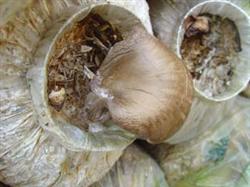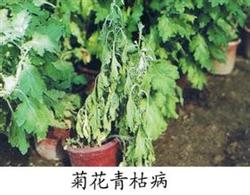Flood potassium fertilizer loss, crop potassium supplement is indispensable

In previous years, we have seen common symptoms of potassium deficiency in cotton, rice, corn, soybeans, peanuts and other crops in several provinces and regions in the middle and lower reaches of the Yangtze River, except for potassium deficiency in some soils, to a large extent, it is related to the greater rainfall and loss of potash fertilizer during the crop growth period this year. From the cotton point of view, most cotton fields have the phenomenon of potassium deficiency, the lower cotton leaves appear yellow and white spots in the early stage, and then the leaf edge turns red and brown spots, and the serious leaf edge begins to scorch. The old leaves of rice with potassium deficiency have reddish brown spots on the leaf surface, the leaf edge is scorched, and the stem is easy to lodge or even break. The young leaves of maize with potassium deficiency turn yellow, the plants are short, and the edges of the old leaves are scorched and brown. The edges of the old leaves of soybean with potassium deficiency were yellow, some of them were wrinkled and curled downwards, and the middle of the leaves remained green. Peanuts lack potassium and the leaves are light green and the edges of the leaves are scorched. The common characteristic of potassium deficiency in these crops is that the lower leaves turn yellow at the tip and gradually wither along the leaf edge, but remain green on both sides of the leaf vein and in the middle of the leaf. Most of the leaves with severe potassium deficiency are yellow or scorched. Potash fertilizer has many functions in the process of crop growth and development: first, it can increase the swelling and pressure of crop cells, make them elastic, and control the opening or closing of stomata in leaf cells, which is beneficial for crops to absorb more carbon dioxide and produce carbohydrates. form sugar and starch; second, it can promote root development, absorb more water, alleviate water evaporation, and improve the drought resistance of crops accordingly. Third, potassium mainly exists in stems and leaves, which can promote the development of stem cellulose, enhance the supporting capacity of stems, and enhance the ability to resist lodging, diseases and insect pests; fourth, potassium plays an important role in the transformation and transport of nutrients in crops. it can accelerate the absorption and utilization of other nutrient elements. Fifth, it can significantly increase crop yield, such as increasing the application of potash fertilizer to insect-resistant cotton, can greatly increase the yield, but also improve crop quality. In view of the general lack of potassium in crops this year, potash fertilizer must be applied in time. First of all, it is necessary to distinguish the application of potassium fertilizer in different soils. The application of potassium fertilizer in soil can generally increase the yield, but the range of yield increase is different in different soils. After potassium fertilizer is applied into soil, clayey soil can absorb more potassium fertilizer and lose less, while sandy soil has poor adsorption capacity and available potassium is easy to lose. Therefore, clayey soil can apply a little more potassium fertilizer at one time, and sandy soil can increase production obviously by applying potassium fertilizer. But it should be applied in stages. Secondly, it should be applied according to different kinds of crops. Crops have good melting ability to potash fertilizer, but because the composition of potash fertilizer is not the same, some ingredients inhibit the growth and development of some crops, such as tobacco, potato, watermelon, tea and so on, which are very sensitive to chloride ion. If potassium chloride is applied, it will reduce the yield and deteriorate the quality of these crops. If these crops are topdressing with potassium sulfate, it can not only increase production but also increase efficiency. However, the effect of potassium chloride on cotton, rice, corn, soybean and other crops is better. Third, pay attention to the application of technology. In the face of the current situation that more potash fertilizer is lost in the rain this year, potash fertilizer must be applied quickly to potassium-deficient crops. First, crops with larger row spacing and longer growth period can be trenched or burrowed to apply potassium sulfate, about 10 kilograms per mu; second, 0.2% potassium dihydrogen phosphate or 1% potassium sulfate solution is sprayed outside the root. Or 1% urea and 1% potassium sulfate mixture; third, starting from the actual situation of local markets, choose to apply effective and high content foliar potassium fertilizer.
- Prev

The polluted material of Pleurotus ostreatus can be replanted.
Experts pointed out that the main manifestation of Pleurotus ostreatus soft rot is that the white hyphae of Pleurotus ostreatus grows in the shape of cobweb on the surface of the border bed and spreads rapidly, covering the bed and encircling the fruiting body. After the base of the fruiting body is surrounded by hyphae, the pathogen spreads upward along its stipe, and finally reappears as the fruiting body stops growing, and the color is dark and rapid.
- Next

Control methods of bacterial wilt of chrysanthemum
First, the symptoms of damage: the upper leaves of the infected plant wilted for 3-5 days, the bottom leaves turned yellow, the appearance of stem nodes near the ground was brown, the succulent part of the root rotted, the epidermis and fleshy root also turned brown, and then became lead-white. The vascular bundle of the cross-sectional stem turns brown, squeezed by hand or spilled by moisturizing, and the diseased root can also be removed from.
Related
- Fuxing push coffee new agricultural production and marketing class: lack of small-scale processing plants
- Jujube rice field leisure farm deep ploughing Yilan for five years to create a space for organic food and play
- Nongyu Farm-A trial of organic papaya for brave women with advanced technology
- Four points for attention in the prevention and control of diseases and insect pests of edible fungi
- How to add nutrient solution to Edible Fungi
- Is there any good way to control edible fungus mites?
- Open Inoculation Technology of Edible Fungi
- Is there any clever way to use fertilizer for edible fungus in winter?
- What agents are used to kill the pathogens of edible fungi in the mushroom shed?
- Rapid drying of Edible Fungi

